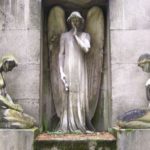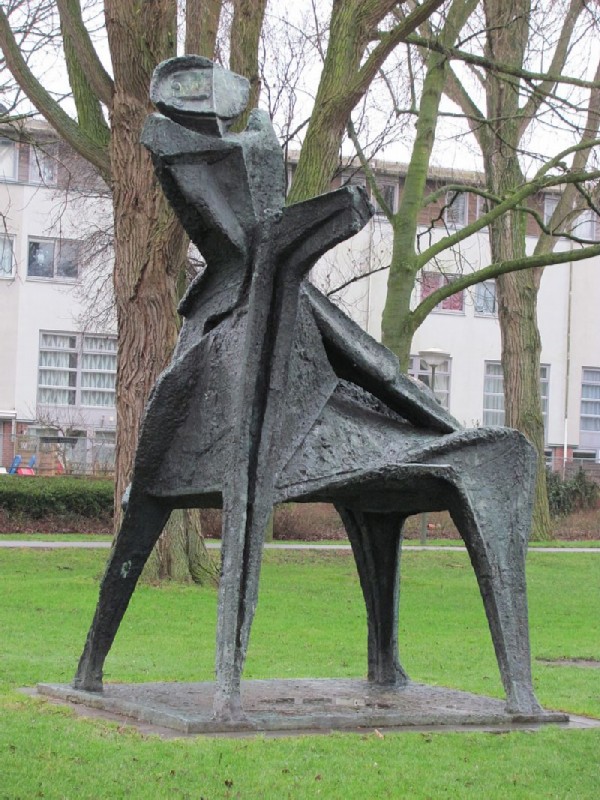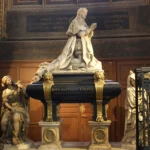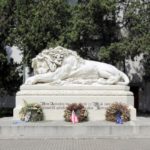Arno Brecker is a brilliant German sculptor

Arno Brecker is a brilliant German sculptor who forever tarnished his reputation for collaborating with the Nazis
Arno Breker (19 July 1900 13 February 1991) is a famous German sculptor of the twentieth century, a prominent representative of neoclassicism. Brecker Arno is one of the most controversial figures in the history of German art, he was an ardent supporter of the ideas of National Socialism and made an enormous contribution to the development of the aesthetics of fascism. A huge number of masterpieces of the master’s work were destroyed after the Second World War during the period of the denazification of Germany. And many facts from his biography still cause condemnation among the progressively minded part of humanity.
Arno Brecker deliberately put his talent at the service of the Third Reich and never publicly repented for his adherence to the ideas of Nazism. At the same time, many outstanding artists, including Salvador Dalí, Aristide Maillol and Charles Despiau, highly appreciated the artist’s work and called him one of the greatest sculptors of the twentieth century.

Biography
Arno Brecker was born on July 19, 1900 in Elberfeld, which today is part of the city of Wuppertal, located in western Germany, near Düsseldorf. He was the eldest child of a large family of stonecutters and tomb makers. The boy was taught the basics of stone processing by his father, and the young Brecker acquired additional knowledge of sculptural techniques at the school of arts and crafts.

In 1920, Arno entered the Düsseldorf Academy of Arts, where he studied for five years. Shortly before graduation, he visited Paris, where he met many young artists, including the art dealer Alfred Flechtheim, with whom he signed the first professional contract for the production of sculptures.
In 1925, immediately after completing his studies at the academy, Arno Brecker created his first masterpiece the monumental figure of the reclining Aurora on the roof of the Ehrenhof in Düsseldorf, for which he received the Challenge Prize of the President of the Düsseldorf District. At the same time, the young artist became interested in making busts to order and remained attached to this occupation for the rest of his life. In 1927, Arnault moved to Paris, where he lived for the next five years.

In 1932, Brecker was awarded the Prize of the Ministry of Culture of the Weimar Republic
He left for Rome to get acquainted with the works of outstanding masters of past eras. He lived in Italy for a year, and then returned to Paris, which he considered his second homeland all his life and loved very much.
Meanwhile, the Nazis came to power in Germany and, on the advice of friends, Arno decided to move permanently to Berlin. The works of the young artist were very popular with Hitler, who called him the greatest sculptor of our time. Brecker voluntarily joined the ranks of the NSDLP and became an active supporter of the ideology of fascism. Until the end of World War II, he created sculptures and monuments glorifying the criminal regime. For his enormous contribution to the art of the Third Reich, the master was awarded the highest awards in Germany many times, and also received dozens of prizes at international exhibitions.

In 1937, the sculptor married a Greek woman, Demeter Messala, with whom he had been living in a civil marriage for ten years. His first wife died tragically in a car accident in 1958. Then the artist married a second time to Charlotte Kluge. This marriage, unlike the first, gave the master the joy of fatherhood, he had two children a son Gerhart and a daughter Karola.

The neoclassical style of the artist’s works perfectly fit into the ideology of Nazism.
Therefore, until the fall of the bloody regime, Arno literally bathed in the rays of glory. Many photographs have survived, in which the sculptor is captured next to Hitler and other leaders of the Third Reich. The artist often accompanied the Fuhrer on propaganda trips and constantly wore a military uniform.
In April 1945, Arno Brecker, fleeing air raids and the approaching Red Army, moved to Bavaria and settled in the small town of Wemding. At the end of the war, as part of a large-scale campaign to denazify Germany, he was accused of collaborating with the Nazi regime, but escaped serious punishment thanks to the intercession of influential figures in the world of art.

Brecker moved permanently to Düsseldorf in 1950, , where he spent the rest of his life. In the post-war period, he earned his living by private sculptural orders and never again collaborated with the authorities. In addition, since his youth. Arno was engaged in the development of architectural projects, and this type of activity also brought him a good income.
The brilliant master lived a very long life and, despite his reputation tarnished by cooperation with Hitler, he had great authority in art circles. He was close friends with Salvador Dali and Ernst Fuchs, and did not pay attention to the attacks of opponents. In wealth and luxury, Arno Brecker died on February 13, 1991 at the age of 90 in Dusseldorf, where he was buried.

The most famous works of Arno Brecker
The genius sculptor has created hundreds of beautiful masterpieces during his professional career. And yet the most famous works of Arno Brecker are:
- The figure of the reclining Aurora on the roof of the Ehrenhof in Dusseldorf (1926) is a masterpiece that brought the young artist wide recognition in his native Germany. The figure of a beautiful naked goddess still adorns the roof of Düsseldorf’s largest art museum.
- “Prometheus” (1935) is a statue of an ancient Greek hero who, according to legend, gave people fire. Today this work is in the courtyard of the museum of the great sculptor in Norvenich.
- The Winner (1936) is a masterpiece created by the artist specifically for the opening of the Olympic Games in Berlin. This sculpture is still located in front of the main entrance to the stadium, built by the authorities of the Third Reich for the Olympics.
- “Party” (1942) a work glorifying the greatness of the criminal fascist regime and the Nazi party. As part of the denazification campaign after the end of World War II, this sculpture was destroyed by the German authorities and has not survived to this day.
Arno Brecker deliberately put his talent in the service of the Nazis and by this act forever tarnished his reputation. But in the memory of his descendants, he will also remain a brilliant sculptor. He is an author of a huge number of beautiful works created in the neoclassical style.







